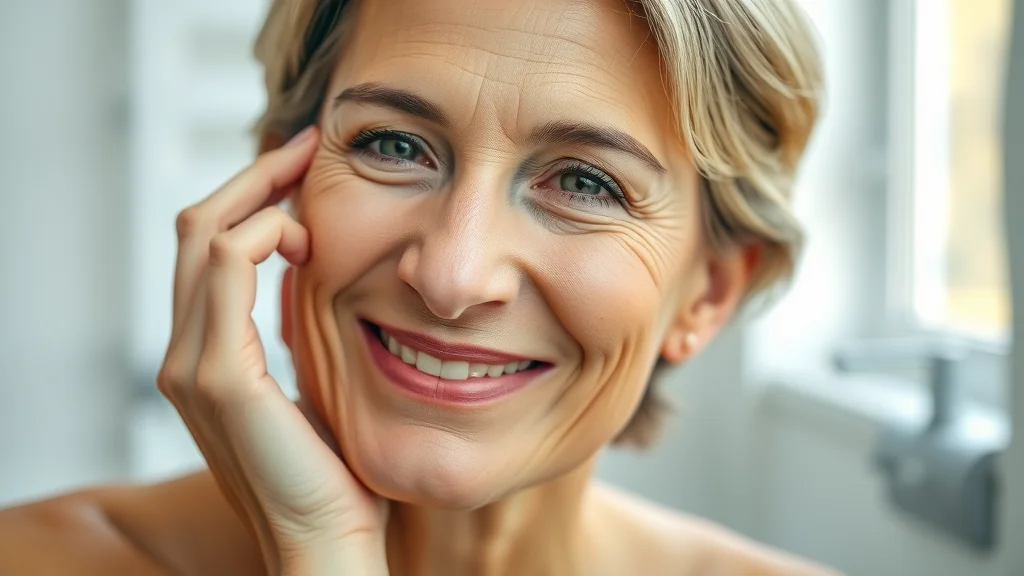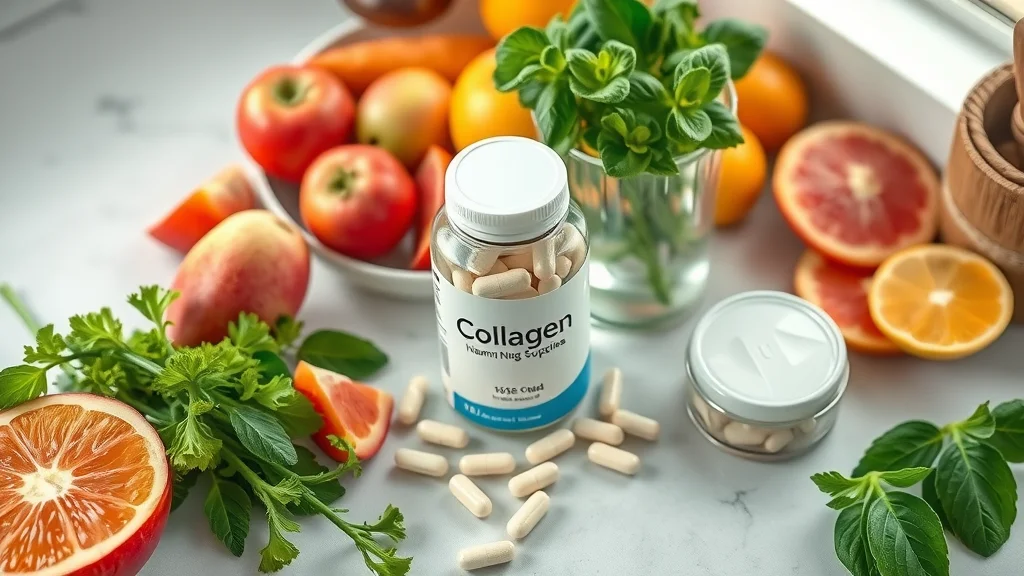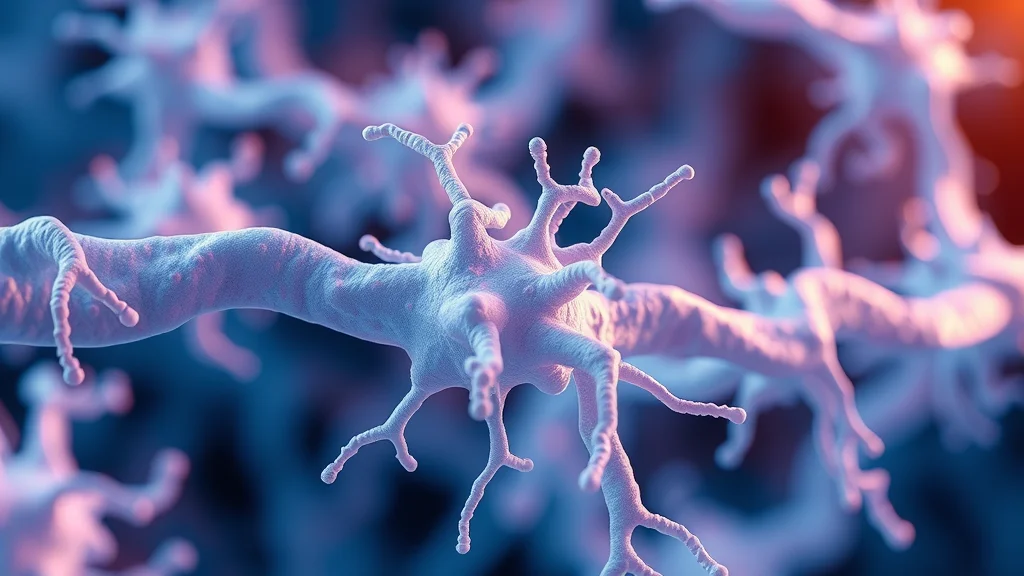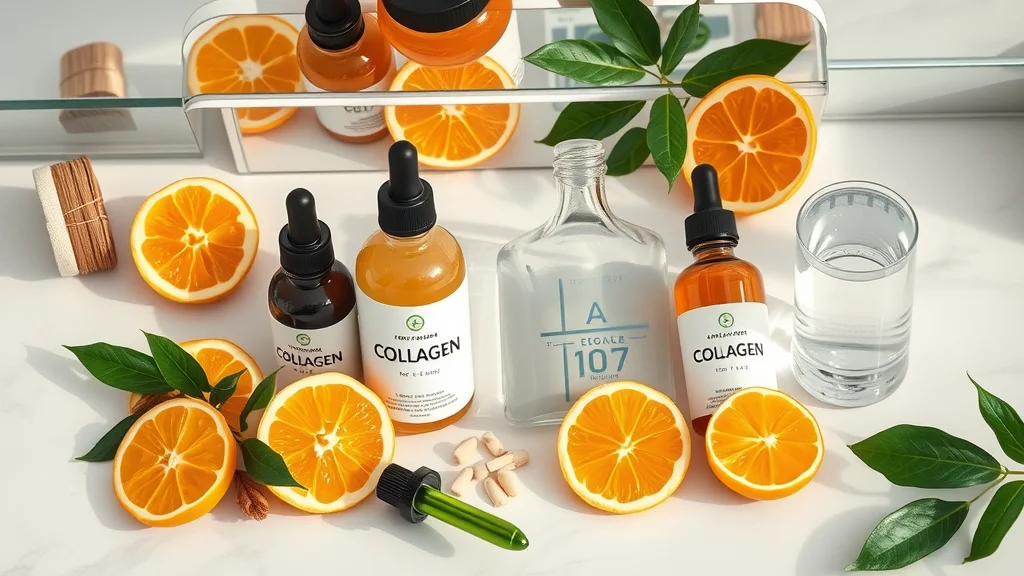Did you know that after age 30, our bodies may lose up to 1% of their collagen supply each year? This gradual decline can visibly impact skin health, leading to fine lines, loss of volume, and diminished radiance. But what if you could actively stimulate collagen production and unlock your skin’s natural ability to look younger, firmer, and smoother? In this comprehensive guide, we dive deep into collagen stimulation, separating science from hype and exploring whether these innovative strategies truly represent the breakthrough for facial collagen you’ve been waiting for.
Unveiling the Truth: Surprising Facts About Collagen Stimulation
“Did you know that after age 30, individuals can lose up to 1% of their collagen supply per year? Discover how collagen stimulation could change the story for your skin health.”

As we age, the human body naturally produces less collagen—a protein found inside connective tissues like skin, bones, and muscles. This decline not only leads skin to appear thinner and less elastic but can also make lines and wrinkles more pronounced. Collagen stimulation involves a range of techniques and products aimed at reversing these effects by encouraging new collagen growth within the treated area. Some solutions are as simple as lifestyle shifts and topical products, while others explore high-tech clinical advances like microneedling and laser treatments. This article pulls together the most surprising facts and science-based details about collagen stimulators, so you can make informed decisions about how to improve your skin.
What You’ll Learn About Collagen Stimulation
The science behind collagen stimulation and its role in skin health
Comparing leading collagen stimulator methods and products
Practical ways to boost collagen production and fight volume loss
Expert insights and the latest research on facial collagen treatments
Understanding Collagen Stimulation: The Science Behind the Buzz
What Is Collagen Stimulation and Why Does It Matter?

Collagen stimulation refers to activating your body’s natural processes to increase the production of collagen—the vital protein that keeps skin plump, firm, and resilient. As collagen levels drop with age, skin loses its youthful volume and develops more fine lines and wrinkles. Stimulating new collagen growth, whether through natural methods or advanced skin treatments, offers a pathway to improve skin texture and help maintain a radiant complexion. Unlike traditional dermal fillers, which add volume directly, collagen stimulators encourage your own skin cells to work harder, potentially delivering longer-lasting and more natural-looking results for skin health.
This surge in popularity for collagen stimulators isn’t just cosmetic—it’s anchored in cutting-edge skincare science. When collagen production increases, both facial collagen and dermal structure are reinforced, which not only minimizes the appearance of existing wrinkles, but can also help prevent new signs of aging. Whether you’re dealing with early volume loss or deep lines, understanding how to boosting collagen can be a game-changer in your personal skincare journey.
The Connection Between Collagen Production, Aging, and Skin Health
Our body’s ability to stimulate collagen production changes as we age. Throughout youth, skin remains supple and smooth, thanks to abundant collagen and elastin—a dynamic duo crucial for elasticity and resilience. But as collagen levels decline, the skin loses volume, leading to deeper lines and diminished vibrancy. Factors like sun exposure, genetics, and lifestyle habits further amplify these changes. Clinical research shows that maintaining strong collagen production is key for long-term skin health, explaining why boosting collagen is now at the forefront of modern anti-aging strategies.
Emerging collagen stimulation techniques and products aim to slow this inevitable decline. From topical solutions and dietary choices to in-office therapies, the opportunity to revitalize facial collagen is more accessible than ever. By taking steps to preserve and stimulate collagen, you can actively improve your appearance and overall skin resilience—even as the years pass.
How Collagen Levels Decline Over Time
Collagen decline is gradual but relentless. By your 30s, the body’s ability to synthesize new collagen molecules slows, often by about 1% each year. This may seem subtle at first, but over time, the cumulative effects are unmistakable—skin loses density, volume loss becomes apparent, and lines deepen. Environmental stressors, repeated sun exposure, and even poor sleep or hydration habits can exacerbate these changes. Understanding this progression can motivate you to embrace proactive measures—like adopting a collagen stimulator or adjusting your daily routine—to support your skin’s natural repair processes. Knowing when and how to stimulate collagen is essential for counteracting these natural declines and unlocking more youthful, healthy skin.
People Also Ask: What is collagen stimulation?
Defining Collagen Stimulation: Facts and Myths
Collagen stimulation is a process designed to prompt your body to make more collagen—usually with the goal of improving skin health, reducing fine lines, and restoring volume loss. Myths abound, with some believing any cream or supplement triggers instant results; the truth is more nuanced. Not all collagen products are true collagen stimulators. Effective stimulation typically comes from strategies that signal skin cells to produce more of this critical protein. Whether through natural means (like specific nutrients or targeted skincare) or through clinical procedures (such as microneedling, light therapy, or certain injectables), the core idea is to encourage fresh collagen production for lasting skin improvement.
Fact: Collagen stimulators are not the same as traditional fillers. For instance, FDA-approved injectables like Sculptra act as a scaffolding beneath the skin, prompting collagen-producing cells into action. Meanwhile, natural methods focus on feeding skin cells with the nutrients and conditions they need to perform optimally. If you’re wondering what works and how safe or effective these different methods can be, the sections below will arm you with science-backed answers and practical tips for maximizing your collagen potential.
Collagen Stimulation Methods: Natural vs. Clinical Solutions

How to Stimulate Collagen Production Naturally
Diet and collagen supplements
Lifestyle habits: hydration, sleep, exercise
Protection: sunscreen and skin care routines
Naturally stimulating collagen production is possible with strategic lifestyle choices. Eating a diet rich in vitamin C, protein, and antioxidants supports your body’s ability to synthesize collagen. Many also turn to collagen supplements, which may provide amino acids necessary for rebuilding collagen fibers. Proper hydration ensures skin cells remain plump and functional; a consistent sleep schedule helps regulate skin repair, while regular exercise promotes healthy circulation and nutrient delivery to the skin. Sun protection is critical, as UV radiation is a leading cause of accelerated collagen breakdown. These natural approaches not only help maintain existing facial collagen but can also boost collagen for a smoother, firmer complexion over time, even as skin loses its youthful bounce with age.
Integrating skincare routines packed with ingredients like retinoids or peptides can also encourage new collagen formation from the outside in. However, natural methods typically produce subtle, incremental improvements—ideal for preventative care or as a supplement to more intensive collagen stimulator procedures.
Minimally Invasive Procedures for Collagen Stimulation
Microneedling (collagen induction therapy)
Laser treatments and light therapy
Radiofrequency
For those seeking more dramatic changes, minimally invasive treatments offer faster and more noticeable boosts in collagen stimulation. Microneedling, also known as collagen induction therapy, uses a device with fine needles to create tiny punctures in the skin, triggering a robust healing response that accelerates new collagen production. Laser treatments and light therapy deeply penetrate the skin to heat underlying tissues, stimulating collagen fibers and tightening the skin from within. Each approach can yield visible improvement in smoothness, firmness, and volume retention within the treated area, often with minimal downtime.

Radiofrequency devices use electromagnetic waves to heat the inner layers of the skin, resulting in subtle yet effective collagen induction over time. While risks and side effects are typically minor—such as temporary redness or swelling—proper consultation and care are crucial. These technologies have quickly become a favorite for people seeking a balance between safety, minimal recovery, and significant outcomes in improving skin texture and firmness, helping to address both fine lines and deeper volume loss.
Collagen Stimulators: Injectables and Advanced Technologies
FDA-approved fillers (e.g., Sculptra)
Comparison of collagen stimulator products
A new generation of collagen stimulators has entered the scene, with injectables like Sculptra leading the way. Unlike traditional dermal filler treatments that physically add volume, collagen stimulating injectables work by initiating the body’s collagen production process at a cellular level. When injected into the treated area, these products act as a scaffold, signaling skin cells to generate new collagen over weeks or months. As a result, improvements appear gradually and typically last longer than conventional fillers.
Advanced devices, including ultrasound and laser-based systems, offer noninvasive to minimally invasive options that can also effectively stimulate collagen production. These technologies boast low risk of side effects and minimal downtime, making them increasingly popular choices for individuals seeking to combat age-related collagen loss and fine lines without surgery. The key is matching the right technology to your unique skin needs for optimal facial collagen restoration.
People Also Ask: What is the best thing to stimulate collagen?
Expert-Recommended Ways to Stimulate Collagen Production
Dermatologists and experts agree that the most effective approach to boost collagen is a combination of techniques—integrating both lifestyle and clinical solutions. Vitamin C intake (through diet and skincare products), regular sun protection, and a balanced diet rich in amino acids are all proven to support natural collagen production. Clinical procedures like microneedling, light therapy, and FDA-approved injectables deliver more significant results for those dealing with established signs of aging or advanced volume loss.
Choosing the right strategy often requires assessing your age, skin type, primary concerns (lines, wrinkles, sagging), and personal tolerance for recovery or side effect risk. Experts recommend starting with less invasive methods when possible, using clinical technologies as needed to maintain or restore your skin’s youthful structure. Consistency is key—regular exposure to supportive ingredients and repeated professional treatments, where appropriate, provide the best outcomes for anyone seeking to improve skin health by stimulating collagen.
Collagen Production & Collagen Stimulation: How the Process Works
Cellular Mechanisms: Collagen Synthesis and Repair

At the cellular level, the process of collagen synthesis is complex but fundamental to skin vitality. Fibroblast cells play a starring role, producing collagen strands that knit together to form the supportive mesh beneath the skin’s surface. Injuries, microtrauma (such as from microneedling), or exposure to particular wavelengths of laser or light therapy signal fibroblasts to ramp up production. During repair, new collagen and elastin fibers entwine, reinforcing the dermal structure and helping to correct the visible signs of aging—including fine lines, wrinkles, and volume loss.
The process relies on an adequate supply of amino acids, vitamin C, and other nutrients, which is why proper skincare and a balanced diet are critical for supporting this regeneration. Scientific visualization confirms that consistent stimulation—be it physical, nutritional, or technological—results in denser, stronger facial collagen and improved skin elasticity, ultimately revitalizing areas where skin loses its firmness or develops fine lines.
The Role of Hyaluronic Acid, Lactic Acid, and Skin Nutrition
No discussion of collagen stimulation would be complete without mentioning hyaluronic acid and lactic acid. Both play crucial supporting roles—hyaluronic acid hydrates and plumps, allowing newly produced collagen to integrate smoothly, while lactic acid gently exfoliates the outer layer, signaling skin cells to repair and renew. When combined with nutrient-rich skincare, these ingredients can supercharge the body’s collagen synthesis capabilities.
Nutrition underpins the entire process. Amino acids from protein, vitamin C for enzyme support, and antioxidants from fruits and vegetables all contribute to a stronger collagen network. By optimizing inside-out nutrition and topical treatments with hyaluronic and lactic acid, the skin becomes primed for maximum repair and resilience—ensuring your investment in collagen stimulator procedures delivers lasting benefits.
Collagen Stimulation Results: What to Expect for Facial Collagen and Skin Quality
Visible Signs of Success: Reducing Fine Lines and Volume Loss

The true advantages of collagen stimulation become clear when you see improvements first-hand: diminished fine lines, restored facial volume, and a healthier, more radiant complexion. While results vary depending on the chosen method, age, and individual skin characteristics, most people notice a difference in the treated area within several weeks to months of consistent stimulation.
Crucially, collagen stimulators and natural methods not only address existing lines and wrinkles but also work as preventive tools—delaying the progression of aging as collagen levels naturally decrease. Proper use can create cumulative, long-term benefits, especially for individuals proactively seeking to boost collagen and maintain optimal skin health as they age.
Comparing Outcomes: Before and After Collagen Stimulator Procedures
Clinical before-and-after photos paint a compelling picture: subtle volume is restored in hollow areas, skin texture improves, and the overall facial contour appears more youthful. Unlike the instant but sometimes artificial look of traditional dermal fillers, collagen stimulator results emerge gradually, looking and feeling more natural. Commonly, treated patients report improvements not just in visible firmness and smoothness, but also in how their skin responds to environmental stressors, showing less sagging or crepey texture over time.
Bear in mind that the best results are observed when patients follow a holistic regimen—balancing procedural treatments with proper skincare, nutrition, and lifestyle. Following expert recommendations for aftercare and maintaining a healthy daily routine maximizes and extends the benefits of newly stimulated collagen production.
Side-by-Side Comparison: Natural Collagen Stimulation vs. Clinical Procedures | ||
Aspect |
Natural Methods |
Clinical Procedures |
|---|---|---|
Speed of Results |
Slow, gradual (months) |
Faster, visible within weeks |
Longevity |
Continuous with consistent habits |
6-24 months (varies by procedure) |
Downtime/Side Effects |
Minimal to none |
Possible swelling, redness, temporary |
Cost |
Generally low (diet, skincare) |
Higher (clinic visits & treatments) |
Suitability |
All skin types, preventative |
Best for targeted aging concerns |
People Also Ask: What is the best collagen stimulating procedure?
Evaluating Top Procedures to Stimulate Collagen
The “best” collagen stimulating procedure often depends on your individual goals and skin condition. Microneedling is widely acclaimed for its safety, accessibility, and proven results with minimal downtime. Laser treatments and light therapy are favored for their ability to treat deeper signs of aging and pigmentation, suitable for those seeking robust rejuvenation. FDA-approved injectables like Sculptra offer long-lasting improvement in facial collagen and can correct significant volume loss for appropriate candidates.
Each method comes with a unique set of pros and cons, including differences in cost, expected downtime, risk of side effect, and suitability for specific skin types. Consulting with a board-certified dermatologist or aesthetic professional is essential to determine the option most likely to help you improve skin quality and achieve your aesthetic goals through targeted collagen stimulation.
Product Spotlight: Do Collagen Supplements and Collagen Stimulators Deliver?
Analysis of Popular Collagen Supplements

Collagen supplements promise to support the body’s innate processes, but do they deliver? Studies suggest that high-quality collagen supplements—especially those enriched with vitamin C and hyaluronic acid—may modestly increase skin hydration, elasticity, and even help diminish wrinkles over time. However, not all products are created equal; pure hydrolyzed collagen tends to be absorbed better, while additives and fillers limit efficacy.
Despite their growing popularity, supplements work best as part of a broader approach, complementing a healthy lifestyle, proper nutrition, and proven topical skincare. If you’re seeking more dramatic transformation, collagen stimulator procedures and clinical devices typically outperform supplements when it comes to restoring facial contours or correcting deep lines and volume loss.
Collagen Supplement vs Collagen Stimulator: What’s More Effective?
The answer depends on your expectations. If you’re looking for subtle improvements in hydration and prevention of premature aging, supplements offer a noninvasive, accessible step—especially when combined with sun protection and a skin-friendly diet. For reversing visible signs of aging and achieving a significant boost in collagen production, professional collagen stimulation (through microneedling, lasers, or injectables) has the edge. Most dermatologists recommend a comprehensive strategy—begin with foundation-building healthy habits, add supplements as desired, and consult an expert about in-office treatments for targeted rejuvenation.
People Also Ask: Can you really stimulate collagen production?
Scientific Evidence for Boosting Collagen Naturally and Clinically
Evidence overwhelmingly shows it is possible to stimulate collagen production naturally and through clinical strategies. Peer-reviewed studies validate the effectiveness of various methods, with vitamin C, retinoids, and lactic acid-based skincare enhancing skin renewal, while professional interventions like laser, radiofrequency, or collagen-stimulating injectables demonstrate measurable densification of collagen fibers. Both approaches, when properly managed, deliver improvements in skin resilience, volume, and overall appearance.
Yet, no miracle overnight fixes exist. Results take time and rely on consistency, careful selection of products or procedures, and expert oversight, especially for those considering more advanced options. The hard truth: sustained, science-driven stimulation is the surest route to durable skin health and meaningful anti-aging results.
Lists: Key Ingredients and Habits That Improve Collagen Stimulation
Vitamin C-rich foods
Lactic acid-based products
Proper hydration
Consistent sleep schedule

Adding these simple practices and ingredients into your daily regimen can boost collagen production and maximize the skin’s ability to repair and rejuvenate naturally. These strategies harness both nutritional and topical routes, empowering you to reinforce the benefits of any collagen stimulator treatment you choose.
FAQs on Collagen Stimulation
How long does it take for collagen stimulation to show results?
Most people notice initial results within 4 to 12 weeks, although some clinical procedures offer improvements even sooner. Natural methods often take longer but can offer sustainable changes if consistent.Are collagen stimulation procedures safe for all skin types?
Most methods are suitable for a wide range of skin types. However, a personalized assessment with a skincare professional is important to minimize any potential side effects or complications, especially for sensitive skin.Can lifestyle factors influence collagen levels?
Absolutely. Nutrition, sleep, hydration, stress levels, and sun exposure all impact your body’s ability to produce and maintain collagen. Positive habits directly support skin health and the outcomes of any collagen stimulation efforts.
Key Takeaways: Making Informed Choices About Collagen Stimulation
Understanding the different collagen stimulation options is crucial for effective skin health management.
Clinical procedures and natural methods each have distinct benefits and considerations.
Consultation with a skincare professional is recommended before choosing a collagen stimulator approach.
Final Thoughts: Is Collagen Stimulation the Breakthrough for You?
“Collagen stimulation may hold the key to younger, healthier skin, but the right approach varies for each individual.”

Every skin journey is unique, but with the right combination of collagen stimulation techniques, lasting radiance isn’t just a promise—it can be your reality.
 Add Row
Add Row  Add
Add 




Write A Comment